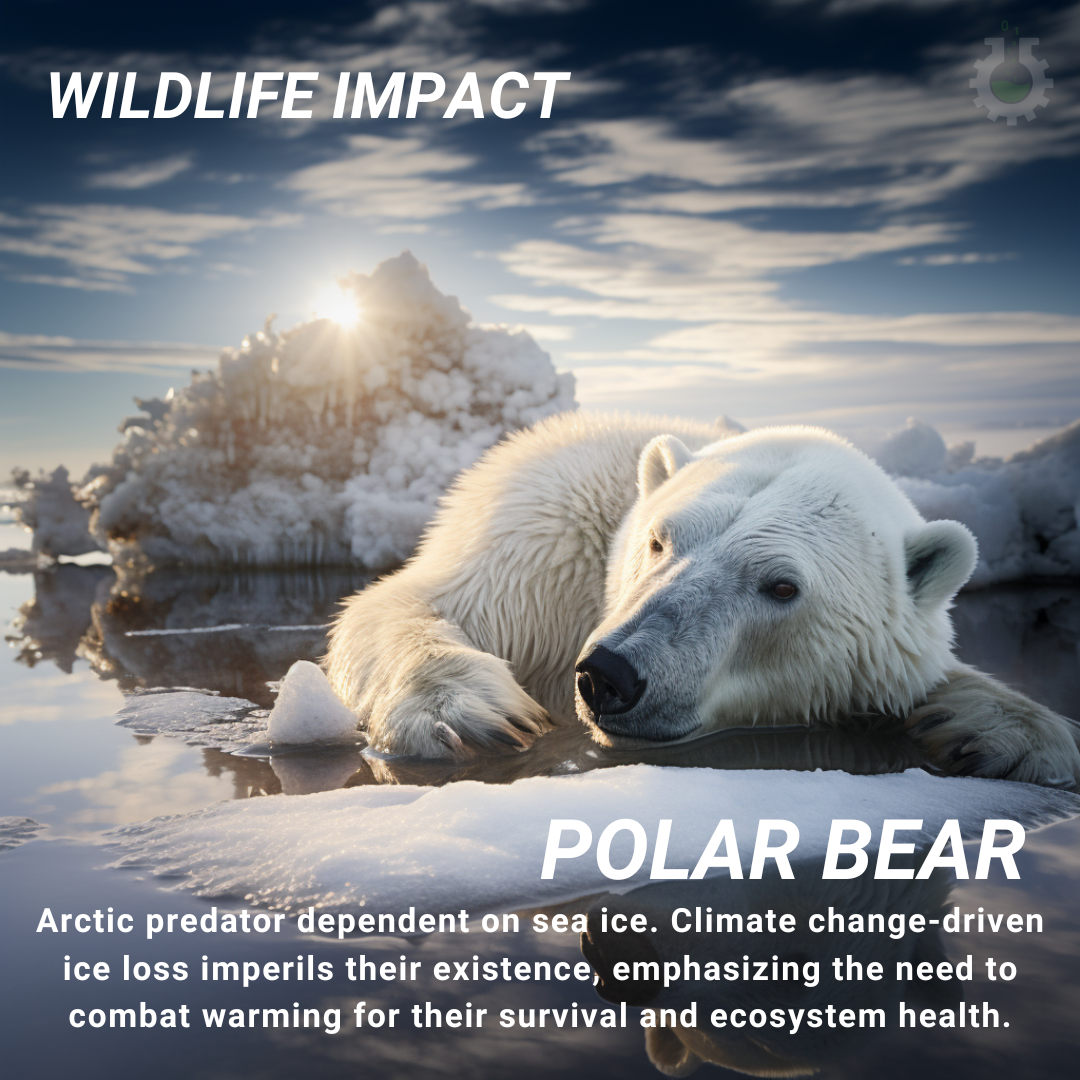August 17, 2023
Climate Change Poster Collection of the Day – Wildlife Impact
Book a Demo
Today’s Climate Change Poster Collection highlights Wildlife Impact particularly on Polar Bear. Climate change is having a devastating impact on the polar bear population. Polar bears primarily reside on sea ice, but with the planet heating up, their habitat is rapidly melting, leading to a drastic decrease in their population. The ongoing loss of sea ice is affecting these Arctic giants in ways that are both direct and profoundly disturbing.
As the sea ice disappears, polar bears are being forced to swim longer distances in search of solid ground. This poses a significant risk to their survival, with increased mortality rates, particularly among cubs, who may not have developed the strength or endurance to make these long and exhausting journeys.
In addition to the loss of habitat, climate change is also affecting the availability of food for polar bears. They rely heavily on seals for their diet, but with the ice melting, their hunting grounds are disappearing. This is leading to malnutrition among the polar bear population and a decrease in their reproductive rates.
With the loss of sea ice, polar bears are spending more and more time on land. This is leading to increased interactions with humans, resulting in potential conflicts. Encounters between humans and bears can be deadly for both parties, adding another layer of threat to these already vulnerable creatures.
Organizations like the World Wildlife Fund (WWF) and Defenders of Wildlife are implementing various strategies to protect polar bears in the face of these challenges. Their efforts are focused on reducing human-bear conflict, protecting their shrinking habitat, and advocating for reduced greenhouse gas emissions, which are the main driver of climate change.
Polar bears are perfectly adapted to life in the Arctic. Their bodies are acclimated to the cold temperatures, with thick layers of fat for insulation and black skin for absorbing heat. This makes the loss of their Arctic sea ice habitat due to global warming even more devastating.
The primary hunting method of polar bears, which involves waiting by a seal’s breathing hole in the ice, is also becoming less efficient due to the melting of Arctic sea ice. As the ice disappears, so do these vital hunting grounds, leaving polar bears with fewer opportunities to feed.
The International Union for Conservation of Nature (IUCN) has listed polar bears as a vulnerable species. They predict a significant decline in their numbers over the next few decades due to the ongoing effects of climate change. The situation is dire, but with international cooperation and concerted conservation efforts, there is still hope that these magnificent creatures can be saved from the brink of extinction.
Discover an inspiring collection of climate change posters.



